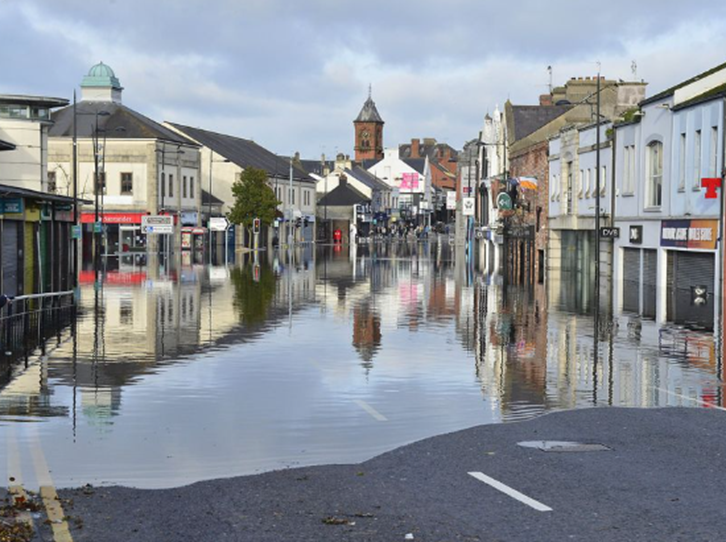05
Jun 2025
- BY Kevin Barry BSc(Hons) MRICS
- POSTED IN Latest News
- WITH 0 COMMENTS
- PERMALINK
- STANDARD POST TYPE

Further details on Report
The Downpatrick Flood Alleviation Scheme Feasibility Report (May 2025) provides a comprehensive assessment of flood risk in Downpatrick, following severe flooding in November 2023. Here’s a concise summary of its findings and recommendations:
🔍 Purpose and Context
- Commissioned by DfI Rivers following extensive flooding in Downpatrick on 1–2 November 2023.
- Cause: heavy rainfall over two weeks, high tides restricting Quoile River discharge, and backflow into urban drains.
- Aimed to identify viable flood alleviation measures for a 1% AEP (design flood) event with climate change allowance.
🌍 Study Area
- Focused on the Quoile River and its urban tributaries: Plank Drain, Market Street Drain, Town Drain, Saul Street Stream, and Strangford Road Stream.
- Includes the Quoile Barrier (North) at Hare Island, a key tidal control structure.
📊 Methodology
- Surveys: walkovers, topographical, bathymetric, environmental, geotechnical, and hydraulic modelling.
- Historical flood records and stakeholder feedback included.
- 14 flood mitigation options assessed (Options A–N).
✅ Shortlisted Options
Two technically and economically viable options were identified:
Option F – Town Defences Only
- Raised defences and pump upgrades within town.
- Protects 108 properties (29 residential, 79 commercial).
- BCR: 1.01 (just above viability threshold).
- Requires demountable defence at railway – adds risk.
Option N – Combined Town and River Defences (Recommended)
- Integrates Option F measures + defences near the Quoile River.
- Protects 106 properties (28 residential, 78 commercial).
- BCR: 1.15 – higher benefit-cost ratio.
- No demountable defences needed – lower operational risk.
🔍 Not Progressed
Options like dredging the Quoile River, modifying or removing barriers, upstream storage, and natural flood management were ruled out due to:
- Minimal reduction in flood risk.
- High costs or major environmental disruption.
- Infeasibility of scale (e.g., 5.85 million m³ storage required).
💷 Costs & Economics
- Option F: £26.98m total PV cost.
- Option N: £22.53m total PV cost (lower due to simpler defences).
- Option N achieves greater benefits at lower cost.
🧮 Carbon and Environmental Considerations
- Option F has a slightly lower carbon footprint.
- Option N avoids demountable infrastructure and is preferred overall.
- Both options face archaeological and ecological sensitivities requiring careful design and further liaison with HED and NIEA.
📌 Conclusion & Recommendations
- Preferred Option: Option N – Combined Flood Defences.
- Viable technically, economically (BCR > 1), and operationally.
- Subject to risks that must be investigated further before detailed design:
- Independent risk and cost reviews.
- Ground and embankment investigations.
- Liaison with HED and NI Water.
